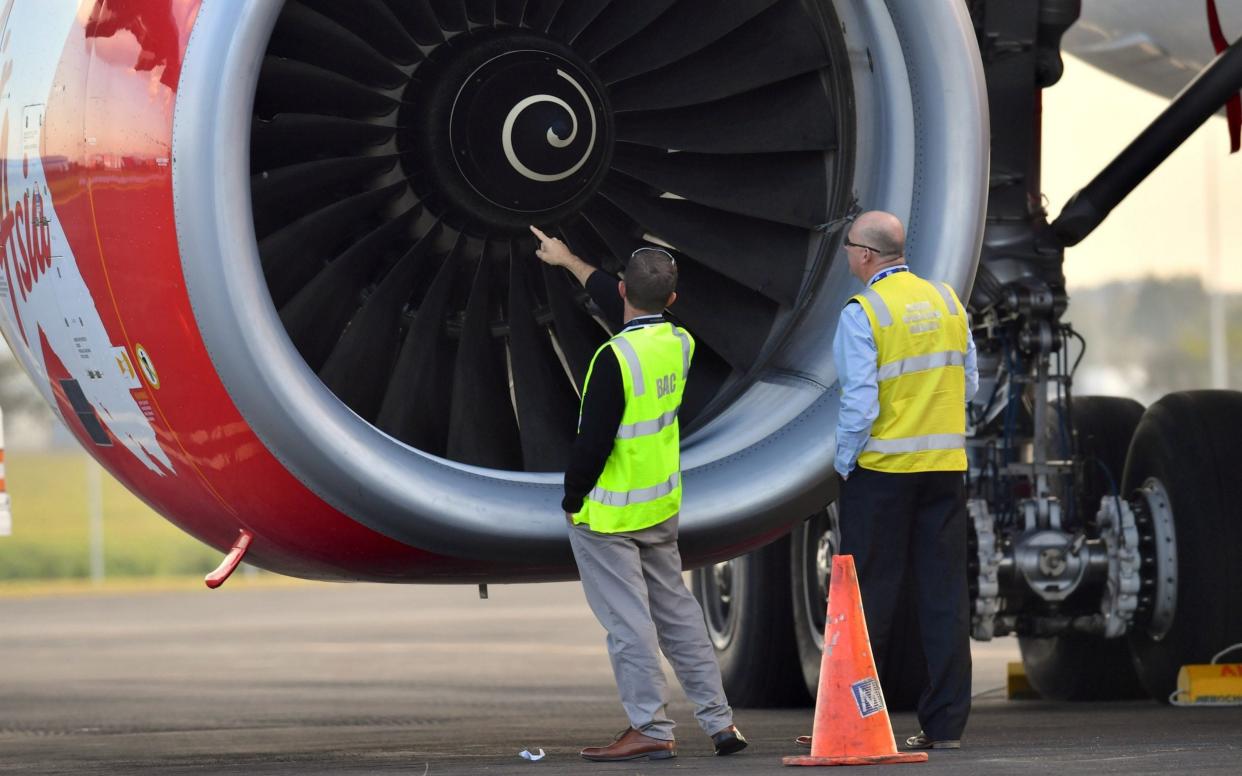Invasive wasp species forcing aeroplanes to abandon take-off in Australia

An imported wasp species is posing a “significant risk” to aircraft safety in Australia, new research has found.
Planes were forced to abandon take-off and, in some cases, return shortly after departure in a series of incidents at Brisbane Airport, prompting research behind a study published in the journal PLOS One on Thursday.
An experiment found that the invasive species Pachodynerus nasidens was building nests in aircraft speedometers, blocking the instruments within minutes of the wasps beginning construction. Certainty about speed is vital to safety particularly during take-off and landing.
The small black wasp with yellow bands on its pointed abdomen was first discovered in Australia during a quarantine check at the Port of Brisbane in 2010, and spotted at Brisbane Airport in 2012. The species is native to the Caribbean and South and Central America.
The wasp is nicknamed the keyhole wasp because of its tendency to take advantage of the apparent safety of artificial nooks and crannies for building nests.
Pitot probes, thin tubes that calculate airspeed by measuring the difference in pressure between air flowing into the tube through its central hole, and air entering holes drilled in the probe's side, have attracted the wasps. By blocking one or more on a plane, the wasps render data inconsistent and make pilots uncertain of their speed.
In 2013, an A330 made an emergency landing at Brisbane Airport shortly after take-off because of trouble determining speed. Subsequently the Australian Transport Safety Bureau found a wasp nest, constructed in less than two hours that had “almost totally obstructed” a pitot probe.
Brisbane Airport and consultancy firm Ecosure conducted a more than three-year study, led by Dr Alan house, involving replica pitot probes created with a 3D printer and placed around the airport. The researchers checked the probes regularly and found that time and again it was the keyhole wasp that was building nests.
Dr House said that while the keyhole wasp is not the only species that does it, they seem to be “particularly adept” at quickly building nests that block the probes.
In August 2015, an A320 flight from Brisbane to Newcastle was found to have a temperature probe blocked by a wasp nest after spending only 30 minutes on the ground in Brisbane.
While maintenance crews, and Dr House, have reported seeing a wasp fly around the nose of a plane within a minute of it arriving, they tend to wait for the aircraft to cool down before beginning to build their nests.
Then the wasp crawls inside and inspects it, flies off and finds food, paralyses it with her sting, then flies it back to the probe and stuffs it inside as a first meal for the egg she then lays, before sealing the top with mud.
While airport officials in Brisbane are taking action to combat the wasps, they fear the species will spread to other states and airports.

